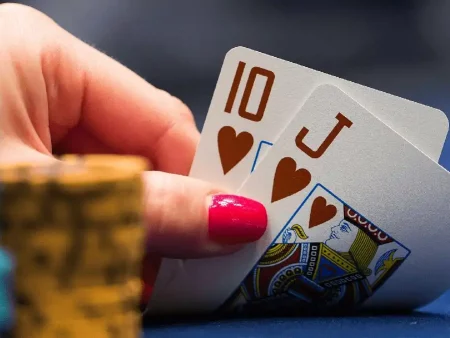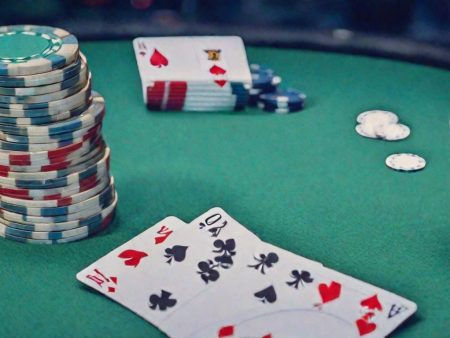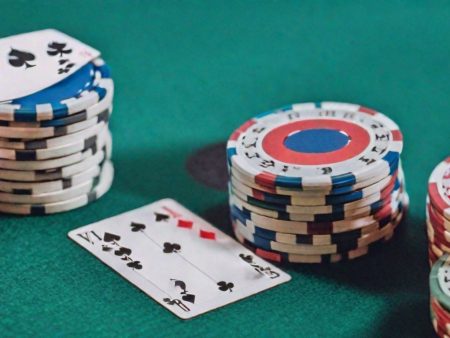In card games featured on top live dealer casino sites, hands go through multiple stages where experienced players place bets and exchange cards. At each stage, new community cards are revealed, and every stage has its own distinct name. The “flop” is one of the key moments in both Texas Hold’em and Omaha poker.
To delve into what the flop is, it can be defined as the stage where the first three community cards are dealt after the pre-flop betting round. This stage allows players to fully assess the strength of their current hand and gauge the threat posed by their opponents. Once the community cards are revealed, the starting hand transforms into the final combination. Listing all potential outcomes is impractical. For success, players must familiarize themselves with the key types of flops they frequently encounter.
The impact of community cards on the table is pivotal to the game’s outcome. A poor flop can render even the strongest hand useless in later streets. This stage is crucial in determining the game’s progression. There are numerous variations of the flop in online casinos, but memorizing them all is nearly impossible. Hence, certain core structures have been identified to help players evaluate win probabilities and the strength of their opponents’ hands.
Rainbow Flop
In this context, the flop is referred to as a “dry” version. Its defining feature is the absence of cards that could form a combination. The cards are of different suits and ranks. A “rainbow” flop indicates that the majority of players at the table are unlikely to form a flush or straight from their hands. The “dry” flop typically consists of one high card and two low cards. If a conservative player actively participated in betting early on and a “rainbow” flop appears, it could suggest that the player initially had a strong hand. Alternatively, they could be bluffing. Most players with small pairs rarely raise bets from early positions.
Read also: Downswing in poker and how to deal with it.
Wooden Typology on the Flop
This is the exact opposite of the previous version. This type of flop can significantly enhance a player’s starting position, increasing the chances of forming a straight or flush. Such hands should be carefully considered, even if you already have a pair of matching cards in hand. However, having a set at this stage doesn’t guarantee a win. It’s essential to analyze your opponents’ hands thoroughly.
“Wet” flops consist of two high-ranking cards. They feature two or three suited cards and higher connectors. This gives all participants high chances of forming strong hands. Deciding whether to continue with such a starting position depends on your position at the table.
Pairing Cards on the Flop
Two cards of the same rank: A-A, T-T, Q-Q, and so on. A pair appearing on the board opens the possibility of forming a full house or four-of-a-kind, especially if you have a strong starting hand. “Pairing” cards rarely strengthen combinations like draws.
High Pairs on the Flop. Much depends on the community cards appearing on the table. A-A-K is a “high flop,” which increases your chances of winning. These situations are rare, but it’s crucial to remember that the strength of high cards plays a key role.
Low Cards on the Flop. The complete opposite of the previous situation. A “low flop” might be 2-5-8, meaning low-ranking cards appear on the board. Such cards are more frequent than “high” ones. These cards could improve your position and give you the chance to form a straight or flush.
Suited Cards on the Flop. This situation occurs when three community cards of the same suit appear on the table. This happens rarely, with a probability of about 5%. Playing in such conditions is very challenging. Even a strong pair loses its value. If the turn or river brings a fourth card of the same suit, your starting hand will lose its strength. Winning with a pair against a flush is practically impossible. A suited flop is also considered “wet.” The outcome and dynamics of the hand depend on whether the dealer adds more cards of the same suit on the next streets.
Triple Matching Situation. A truly exotic moment occurs when three cards of the same rank open on the flop. For example, 7-7-7, K-K-K, A-A-A, and so on. The probability of this incredibly rare situation is just 0.24%. The main question for players is whether anyone will manage to form four-of-a-kind using their pocket cards. This creates ideal conditions for bluffing, but such an aggressive strategy is fraught with significant risks, as the necessary card might already be in the hands of one of the opponents.
The Art of Playing the Flop. Professional poker players leave nothing to chance and base their strategy on the type of community cards revealed on the flop. Winning at this stage means preserving the current pot. To achieve this, it’s essential to think through your moves carefully, consider the strength of your opponents’ hands, and assess the betting sizes accurately. A successful flop strategy includes several well-planned moves that help either strengthen your initial advantage or minimize potential losses.
Step 1 — Analyzing the Real and Potential Strength of the Hand
The significance of the flop emphasizes the importance of using all available analytical tools. Once the community cards are revealed, players should follow these steps:
- Out Calculation: Analyzing pocket cards and community cards helps determine how many cards in the deck can improve the starting hand to form a winning combination.
- Probability Calculation: Based on the number of outs, players can use poker calculators or specific charts to determine the probability of the necessary cards appearing on the next streets.
- Risk Assessment: Professionals assess potential risks and estimate the likelihood of losing, considering the available information.
- Comparing Odds to Pot Size: This helps players determine the optimal bet size for the given hand.
At this stage, it’s crucial to apply the basic principles of poker mathematics, considering the known data — the community cards on the table.
Step 2 — Analyzing Secondary Factors
Of course, confidence in victory doesn’t only rely on your pocket cards. A key factor is evaluating your opponents’ hands. This requires thorough analysis and observation. Experienced players pay close attention to their opponents’ behavior at different stages of the game and consider the size of their bets. Accurately defining opponents’ strategies helps make skilled decisions on how to play your hand. Effective analysis involves observing how opponents manage their cards and bankroll in various game situations. Sometimes, simple observation can be more valuable than strict scientific calculations. This skill improves with experience.
Professional poker player Daniel Negreanu successfully used this method during one of the prestigious tournaments. He accurately predicted his opponent’s pocket cards by watching their behavior. Lessons learned from masters’ experiences become valuable life hacks for every player.
Step 3 — Determining the Bet Size
The flop is an ideal moment for bluffing and using other tactical moves. Many players intentionally make continuation bets to control the game’s flow. The player who made the last raise before the community cards are revealed gets the chance to lead the betting and show the strength of their hand.
To gain a favorable position, players are advised to use “dry” boards. It’s important to avoid “wet” textures that could expand the range of hands in the opponents’ arsenal. To successfully deceive opponents with a bluff, follow a few simple rules:
- Bluffing works best against one opponent, not several.
- Late positions are optimal for bluffing.
- Bet sizing is effective if the hand has the potential to improve on the next streets.
- Avoid bluffing on a “high flop.”
- If your opponents have already figured out your tactics from previous hands (watching your failed bluffs), it’s better to refrain from using this strategy.
The safest way to play is to determine bet size based on the likelihood of improving your hand. Betting increases are relevant only if there’s a chance to strengthen the hand in subsequent stages to form a better combination.
Read also: Chip dumping – money laundering through poker rooms.
Step 4 — Determining the Bet Size
Overbets and bluffs are effective methods, but their success depends on the specific cards. It’s worth taking risks only if there’s a chance to improve the hand in later stages. Beginners with weaker starting hands are advised to play cautiously and use smaller bets. Attempting a bluff without a strong combination can result in losing the pot.
When determining bet size, consider not only the odds of winning but also the strength of your opponents’ hands and the likelihood of failure. The optimal bet size will depend on the specific situation and the player’s experience level. Finally, if you’re looking for a casino with a deposit bonus, click the provided link. For more on the gambling industry, check out our blog. Want to play smarter and maximize your wins? Read expert casino articles – tactics, strategies, and real-world examples from professionals.
FAQ: Flop in poker: types, playing different situations with examples
What is the flop in poker?
The flop refers to the first three community cards dealt face-up on the table in games like Texas Hold'em and Omaha.
It’s a crucial phase that significantly shapes the hand.
Why is the flop important in poker?
The flop provides the first glimpse of shared cards, allowing players to evaluate their hand’s potential and adjust their strategy.
It often determines the strength of possible combinations.
What are the types of flops in poker?
Types include dry flops (few draws available), wet flops (multiple draw possibilities), paired flops, and monotone flops (all cards of the same suit).
Each type influences betting and strategy differently.
How should players approach different flop types?
On dry flops, cautious play is common, while wet flops demand attention to potential draws.
Adjust your play to match the board texture and your opponents’ likely ranges.
What does “hitting the flop” mean?
Hitting the flop means the community cards improve your starting hand, such as forming a pair, set, or a strong draw.
Failing to hit the flop often means relying on bluffing or folding.
How can beginners improve their play on the flop?
Beginners should focus on evaluating board texture, considering opponents' actions, and playing positionally.
Learning to read the flop’s potential for strong hands or draws is key.
Are there examples of good and bad flops for certain hands?
Yes, an ace-high flop is great for an Ace-King hand but poor for small pocket pairs.
Wet flops are dangerous for hands without strong draws or made combinations.






